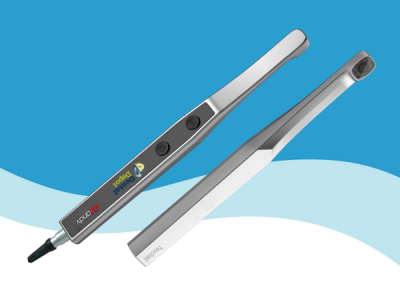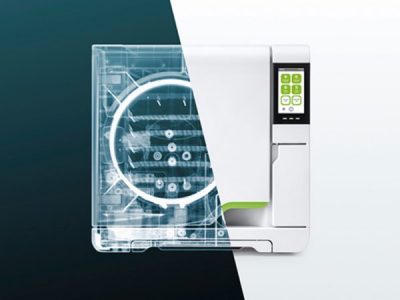Handpieces are the bread and butter of any dental practice. They’re essential for everyday procedures and need to be durable, reliable and efficient.
We’ve put together a list of important things to consider when investing in a new handpiece. We hope this guide will help you make the best decision for your practice.
Air driven or electric driven?
These are the two ways that you can drive the motor which in turn drives the handpieces. The air driven handpiece has been around for much longer than the electric and is favoured amongst the vast majority of dental practices. However, there are advantages and disadvantages to both.
Air driven
Advantages
- More affordable.
- Lighter and easier to handle in a high speed application.
- Ability to ‘hear’ what you are doing for a more sensitive procedural approach.
- Less likely to be damaged during sterilisation.
- Parts are less costly to replace or fix.
Disadvantages
- Higher speed, but lower torque.
- Noisier, which can be off-putting for patients.
Electric driven
Advantages
- Consistent torque.
- Increased cutting edge precision.
- A wider option of speeds.
- Quieter, providing a more comfortable patient experience.
Disadvantages
- On the expensive side.
- Heavy when compared to highspeed application.
- Very sensitive. This can be difficult for an inexperienced user to master.
Most common procedures
The handpiece you choose will largely depend on the type of procedures you undergo most often. Electric driven handpieces are most effective for tooth preparations and the cutting of crowns, whereas air driven handpieces excel on high speed for cavity and crown preparation.
The type of procedure you undertake will also determine the head size of your handpiece. While a smaller head will provide greater visibility and increased accuracy, torque is also reduced, meaning less speed. Smaller heads are beneficial if your practice treats a lot of children. If high speed is needed for your procedures, however, a slightly larger head may be required.
Budget
Budget is also often a deciding factor. Not only are electric handpieces more expensive, but they can also pose difficulties when it comes to installation if your practice has previously always used air-driven handpieces. In this case, it may be much more convenient and financially viable to continue using air-driven handpieces.
Comfort
It’s also important to consider both staff and patient comfort when choosing a handpiece. You want to ensure that your staff are confident in its operation. This could influence whether you need to hold staff training programs to learn how to use a new handpiece. The noise-factor is also a double-edged sword here. Many dentists use the noise created by the air-driven handpiece as a guide, whereas an electric-driven handpiece may be less confronting for patients. When making this decision, it’s paramount to consider safety very seriously.
Another feature to consider when it comes to the comfort of your staff is the weight of the handpiece. Electric motors maybe used for both high and low speed work. In a slow speed application the weights between electric and air driven are approximately the same. In the high speed application the electric motor setup is heavier. Choosing a light and well-balanced handpiece will reduce the risk of RSI. Carefully consider the size and stature of your staff. If there is a significant disparity, it may be best to invest in a few different sizes of handpieces. A heavy handpiece may be fine for someone with large hands, but difficult to use for someone with petite fingers.
Visibility
If you find that restoration and prosthetic procedures are common in your practice, visibility will be high on your list of musts. Many handpieces include LED lighting so that you are never casting a shadow on the areas that you need to see best during the procedure.
Spray systems
Ensure you choose a handpiece with the appropriate amount of air and water ports for the procedures that you will be undertaking. A handpiece with multiple water and air ports will be more efficient in removing debris from the area of attention so that it is easier to see and work, and there is less risk of infection. A handpiece with multiple air and water channels will also be more effective in cooling the area.
Bearing
Handpieces have either ceramic or stainless steel bearings in their turbines. Ceramic bearings are often considered to be more durable than stainless steel bearings. It is crucial to keep bearings in top shape by cleaning them often, to reduce wear and bur chattering. The way in which you clean your handpiece will depend on whether you have a lube-free handpiece. Determining whether a lube-free handpiece would be beneficial to your practice largely depends on how much time you can sacrifice for cleaning.
Looking for a new handpiece for your practice? Dental Depot stock a wide range of high and slow speed handpieces from leading brands. Contact us today to enquire about a product!



